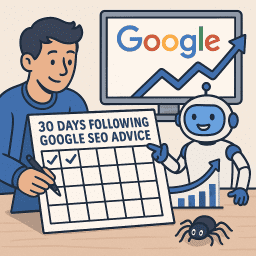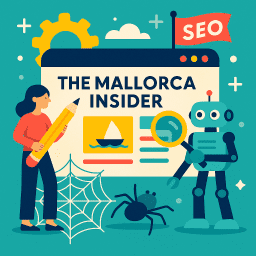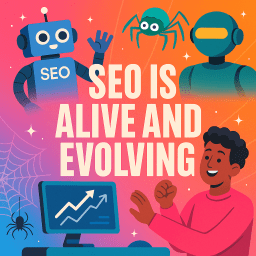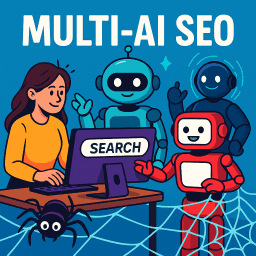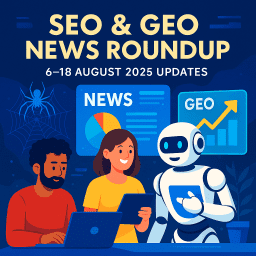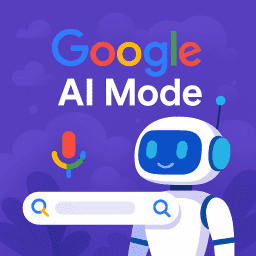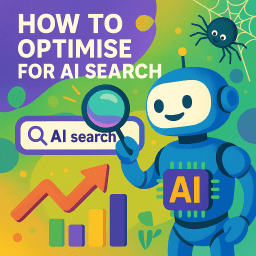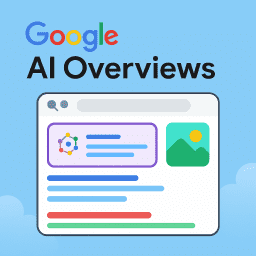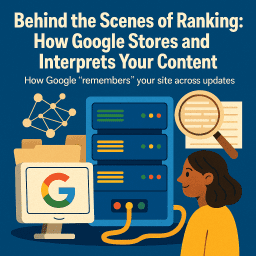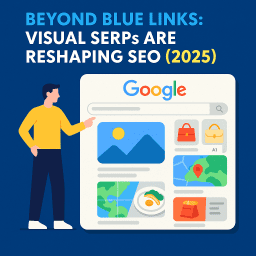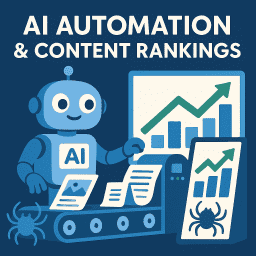Building Digital Twins for SEO: Future-Proofing for AI Search
Why your brand needs a virtual identity optimised for AI.
🧬 Why Your Brand Needs a Digital Twin
Having a website used to be enough. Today, AI search engines like Google Gemini, Perplexity, and ChatGPT Search aren’t just looking at your site – they’re looking for entities. They want structured, verified, and connected versions of your business that they can reliably cite. This is where digital twins for SEO come in. A digital twin is your brand’s virtual identity, optimised for AI, designed to be recognised and trusted.
What Is a Digital Twin for SEO?
A digital twin for SEO is a structured, machine-readable version of your brand identity. Think of it as your business card, reputation, and authority packaged into a format that AI and search engines can process without ambiguity. It goes beyond schema markup – it’s about aligning data, reputation, and relationships across the web so that AI “knows” who you are.
- Identity layer: Who you are (brand, authors, people).
- Data layer: What you do (services, products, locations).
- Reputation layer: Why you’re trusted (reviews, mentions, partnerships).
- Content layer: How you communicate (FAQs, conversational content, Q&A blocks).
Why Digital Twins Matter in AI Search
- AI assistants interact with entities, not just websites. If your brand isn’t clearly represented, AI may recommend a competitor instead.
- Visibility in AI answers depends on clarity. Ambiguity leads to exclusion, even if your website has great content.
- Future scenario: When a user asks, “Find me a local accountant who specialises in small businesses,” Gemini may not list your site at all — unless your digital twin is complete, consistent, and connected.
Components of a Digital Twin
A complete digital twin brings together multiple layers of identity and authority:
- Data layer: Schema markup, Knowledge Graph entries, Wikidata listings, and structured product/service info.
- Reputation layer: Verified reviews, press mentions, industry directories, and third-party validation.
- Content layer: FAQs, structured guides, and conversational answers designed for AI assistants.
- Identity layer: Transparent authorship, team bios, and social proof that AI can verify.
How to Build Your Brand’s Digital Twin
- Map your entity footprint: Check how your brand is currently represented across Google, LinkedIn, Wikidata, Crunchbase, and directories.
- Align your profiles: Ensure names, addresses, phone numbers, and branding are consistent everywhere.
- Implement schema: Add structured markup for services, products, FAQs, and authors to make your site machine-readable.
- Strengthen reputation: Gain mentions in reputable outlets, gather reviews, and connect with trusted partners.
- Create AI-friendly content: Publish Q&A sections and conversational blocks optimised for AI retrieval.
Case Studies: Digital Twins in Action
Case 1: Law Firm – A local law firm connected its site to Wikidata, added detailed schema for services, and built partnerships with the Law Society. Result: cited by Perplexity as a trusted source for “small business legal advice.”
Case 2: Restaurant – A restaurant structured its menu with schema, updated Google Business Profile, and secured local press mentions. Result: Gemini cited it directly in AI answers for “best vegan restaurants in Warsaw.”
SEO Benefits of Building a Digital Twin
- AI visibility: Increases chances of being cited in AI-generated results.
- Future-proofing: Prepares your brand for multi-AI ecosystems.
- Credibility: Builds authority through both technical and human signals.
- Consistency: Reduces confusion and strengthens brand trust across platforms.
“A digital twin is more than schema markup. It’s the living, breathing version of your brand that AI trusts enough to recommend.” – David Roche
What the Experts Are Saying
- “Entity SEO is now the foundation of AI search. If your brand doesn’t have a clear identity graph, you’re invisible.” – Lily Ray
- “Reputation graphs are the evolution of link graphs. Digital twins are how brands will plug into them.” – Rand Fishkin
- “Brands that build machine-readable trust today will own AI search tomorrow.” – Aleyda Solís
Final Thoughts
In the AI-driven search era, websites alone aren’t enough. To be seen, trusted, and recommended by AI, your brand needs a digital twin – a structured, connected, and credible identity that search engines can understand. By investing in data clarity, reputation building, and entity optimisation, SMEs can level the playing field against larger competitors.
AI search is moving fast, and those who delay risk invisibility. But the opportunity is here for businesses of all sizes: build your digital twin today, and you won’t just keep up – you’ll lead.
Also read
How to Do Entity SEO in 2025 (Without Getting Too Technical)
AI Search Trust: How Reputation Graphs Decide
Frequently Asked Questions
What is a digital twin in SEO?
A digital twin is a virtual, structured version of your brand identity designed to be understood and trusted by AI search engines.
Why are digital twins important for AI search?
AI assistants use entities, not just websites. A digital twin ensures your brand is recognised and cited in AI-driven answers.
How do I create a digital twin for my brand?
Start by aligning your online profiles, adding schema markup, gathering reviews, and building connections with trusted sources.
Do small businesses need digital twins?
Yes. Digital twins help SMEs compete with larger brands by making their identities clear and trusted in AI ecosystems.
What role does schema markup play in digital twins?
Schema provides structured data that allows AI search to process your services, products, and authors without ambiguity.
Is building a digital twin expensive?
Not necessarily. Many steps, like consistent profiles and basic schema, are low-cost but high-impact.
Can a digital twin replace a website?
No. A website is still essential, but the digital twin enhances visibility by making your brand machine-readable across platforms.
How do digital twins connect to reputation graphs?
Digital twins feed into reputation graphs by proving entity credibility through reviews, citations, and partnerships.
Will digital twins become standard in SEO?
Yes. As AI search grows, digital twins will be a basic requirement for visibility.
What’s the first step to building a digital twin?
Audit your current brand footprint online and align all entity data consistently across platforms.



